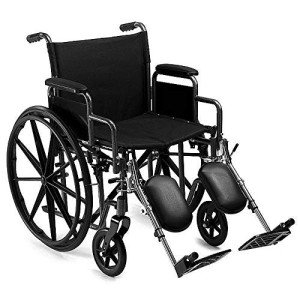Extra Wide Bariatric Wheelchair With 24" Seat
Frame

Wheelchairs are generally manufactured in a standard width of 16" (narrow grownup), 18" (basic grownup) or 20" (wide adult). However, some wheelchair users need a seat width broader than these requirements. These extra large bariatric wheelchairs are usually fitted by an expert and based on the user's measurements.
In order to get the most comfortable and protected trip for travelers, it is crucial that wheelchairs are appropriately sized. This implies that the wheelchair should have the ability to accommodate the user's size while having the ability to steer in tight spaces. This is why BriteLift offers personalized automobiles to transport wheelchair guests. This consists of vans that can safely drive and maneuver large wheelchairs, enabling them to feel safe and comfy in every ride. This is the only way to provide the most reliable transport for wheelchair guests.
Seat
Bariatric wheelchairs are larger than basic wheelchairs and are developed to accommodate individuals who are much heavier or larger. This extra large bariatric wheelchair from Medline includes a 24" seat and a carbon steel frame with rust- and chip-resistant chrome plating. The wheelchair has tool-free push-button adjustable footrests and easy-to-clean vinyl upholstery. It can support as much as 500 pounds.
When selecting the right wheelchair width, it is necessary to determine the user sitting typically on a flat surface area throughout their largest part of the lap which is usually their hips. bariatric travel wheelchair is likewise recommended that you utilize a yardstick rather than a measuring tape as it tends to give a more accurate measurement. If the user will be using a winter season coat then an extra 2" ought to be included to the measurement of their seat width.
Weight Capacity
A bariatric wheelchair is generally larger and heavier than basic wheelchairs. This is why they need more careful maneuvering. Drivers need to be trained in managing these passengers. Additionally, cars require to have adequate room for these chairs along with ramps and wheelchair lifts. In addition, they require to know how to arrange these trips ahead of time.
When selecting the chair width, it is essential to measure the user's largest point in the seat, which is generally the hips. Lots of wheelchair producers likewise use a yardstick that can be utilized to aid with this measurement. When measuring a person's width, it is best to take the measurement directly throughout and not wrap the tape around their hips which can provide a false reading.
In some cases, the largest part of an individual's thighs might be wider than their hips so this need to be thought about when choosing the chair width. In these instances, it is in some cases needed to include an additional 2" to the chair width.
In general, the weight capacity of a bariatric wheelchair should not be exceeded under any situations or serious injury may result. When utilizing the chair, always be sure that it is on a steady and level surface with front casters pointing forward and wheel locks engaged. In addition, never ever lean or move the center of mass while sitting in the chair.
